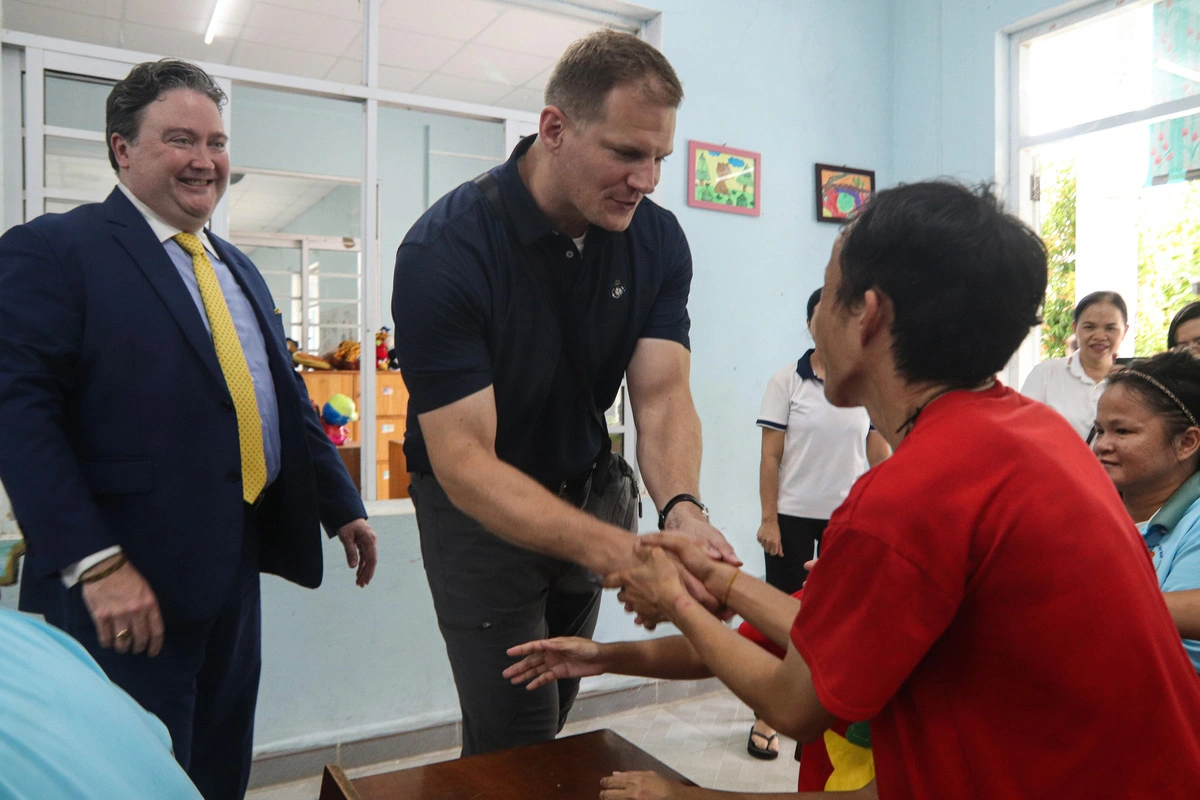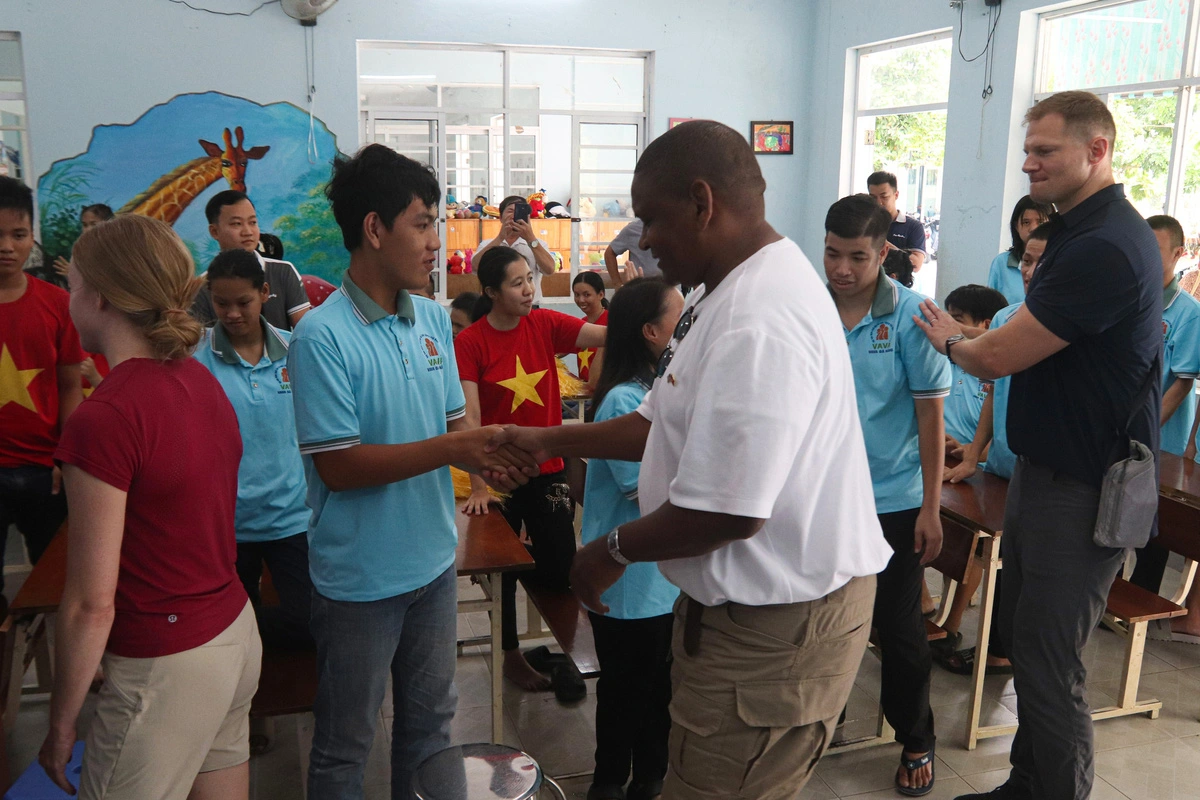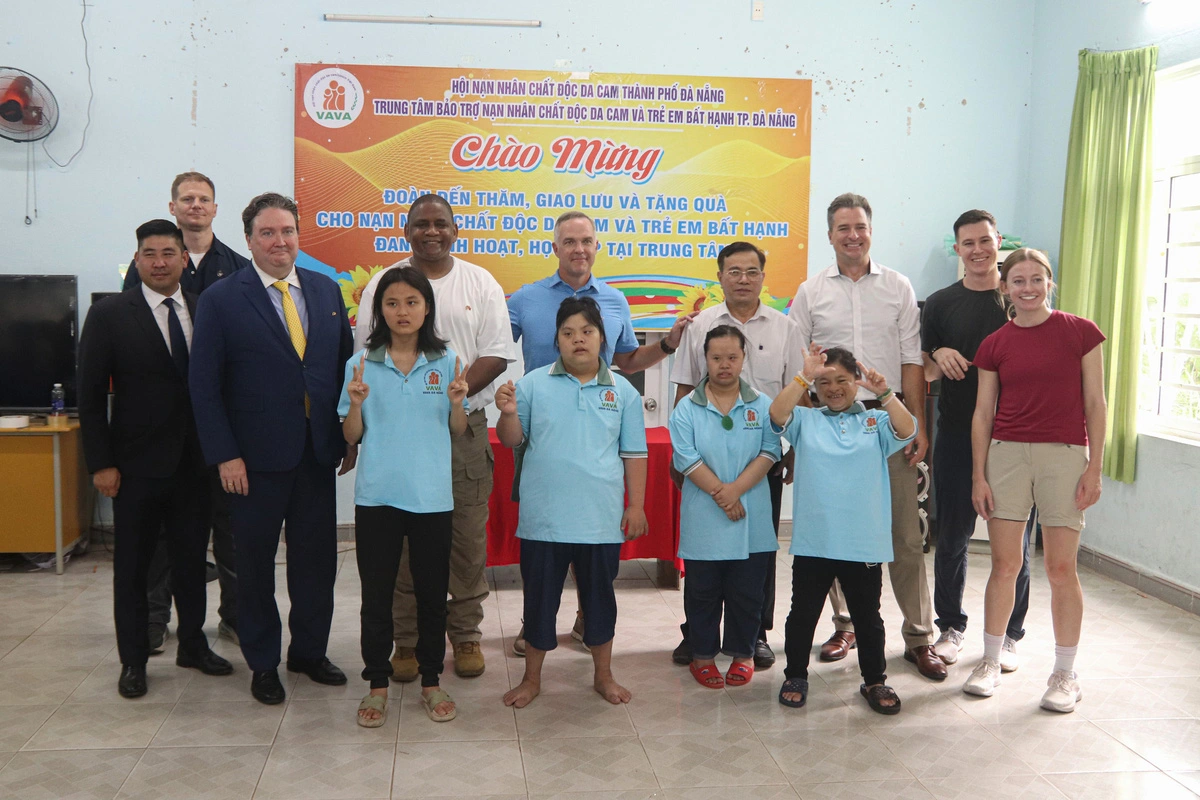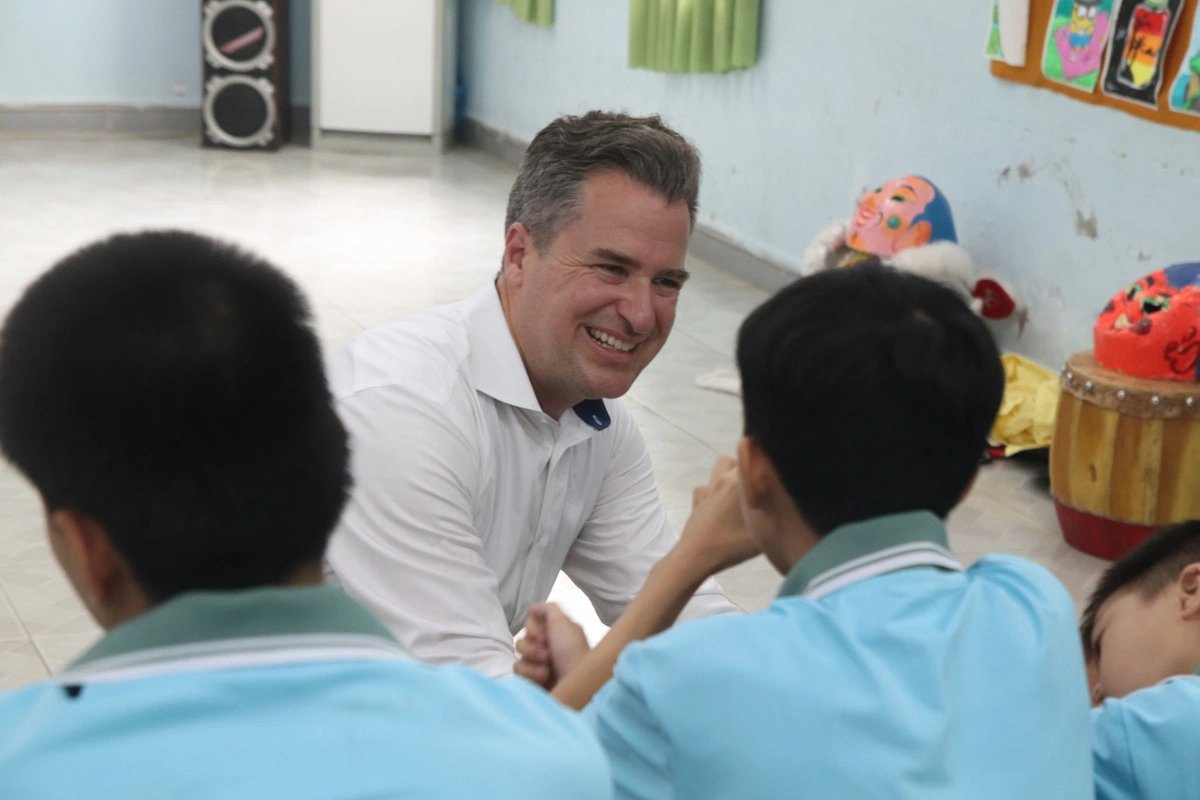U.S. Ambassador to Vietnam Marc Knapper and a delegation of U.S. Marine veterans and their relatives paid a visit to a support center for Agent Orange (AO)/dioxin victims and unfortunate children in Da Nang City, central Vietnam on Friday.
As part of their Vietnam trip from September 2 to 8, the delegation visited the social center in Hoa Nhon Commune, Hoa Vang District, where they met with and offered gifts to AO/dioxin victims.
The center currently houses around 90 victims, providing them with opportunities for recreation, education, vocational training, and healthcare.
|
|
| U.S. Marine veterans visit AO/dioxin victims at a support center for these victims and disadvantaged children in Da Nang City, central Vietnam, September 6, 2024. Photo: Thanh Nguyen |
During the visit, the U.S. veterans and Ambassador Knapper listened to the victims' emotional stories, expressing empathy for the suffering caused by the effects of AO/dioxin from the war in Vietnam, which ended in 1975.
The American guests also engaged in cultural and sporting activities with the victims, further strengthening bonds of understanding and support.
“Today’s meeting can be seen as a great spiritual encouragement for all the AO victims at the center,” said Nguyen Van An, chairman of the Da Nang Agent Orange Victims Association.
Such visits bring joys and cheers to the victims, helping them overcome challenges and move forward, he added.
|
|
| Members of the U.S. Marine veteran delegation and U.S. Ambassador to Vietnam Marc Knapper, wearing a yellow tie, pose for a photo with some of AO/dioxin victims at a support center for these victims and disadvantaged children in Da Nang City, central Vietnam, September 6, 2024. Photo: Thanh Nguyen |
He underscored that the war is over but the consequences of AO/dioxin, a toxic defoliant that U.S. troops used in the war, are still lingering throughout Vietnam and Da Nang in particular.
John D. Hollis, a member of the veterans' delegation, underscored that AO/dioxin suffering is one of the severe consequences left over from the war in Vietnam.
He said the delegation wished to contribute to healing the wounds of war and bringing a brighter future to all AO/dioxin victims, including children.
Children all over the world deserve to have fun and be happy, Hollis said.
Ambassador Knapper emphasized that Vietnamese and American children are the future of the two countries, reiterating Washington’s commitment to support Vietnam on its path to become a strong, independent, and resilient country.
|
|
| A member of the U.S Marine veteran delegation (C) talks with AO/dioxin victims at a support center for AO/dioxin victims and disadvantaged children in Da Nang City, central Vietnam, September 6, 2024. Photo: Thanh Nguyen |
He added the two countries will celebrate the 30th anniversary of their diplomatic relations in 2025.
In 1961-71, U.S. troops sprayed more than 80 million liters of toxic chemicals, 61 percent of which was AO containing 366kg of dioxin, on nearly 26,000 hamlets and villages that covered 3.06 million hectares, or roughly one-fourth of the area of southern Vietnam, according to the Vietnam Association of Victims of Agent Orange/Dioxin.
An estimated 4.8 million Vietnamese people were exposed to AO/dioxin during the war and over three million have suffered illnesses from it, the agency said.
Every year, Vietnam earmarks a budget of more than VND10 trillion (US$402 million) to cover AO/dioxin victim expenses, monthly allowances, healthcare, and functional rehabilitation, as well as support for areas still severely affected by the toxic herbicide.
Like us on Facebook or follow us on X to get the latest news about Vietnam!






















































